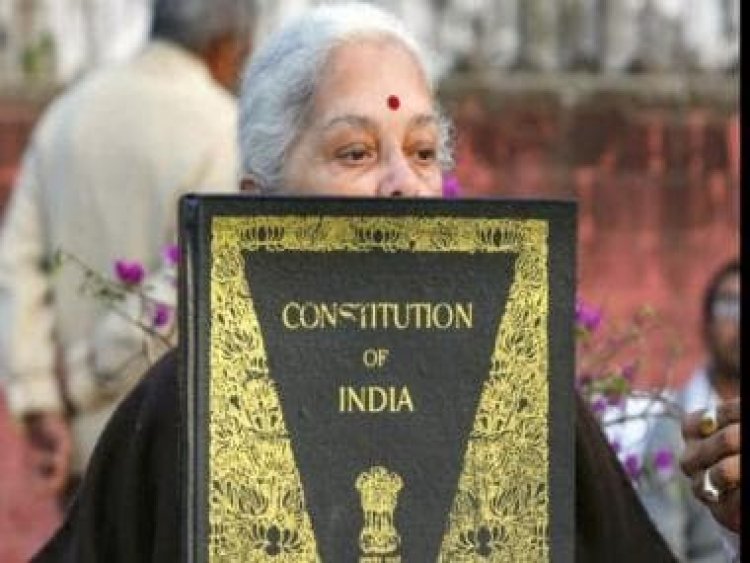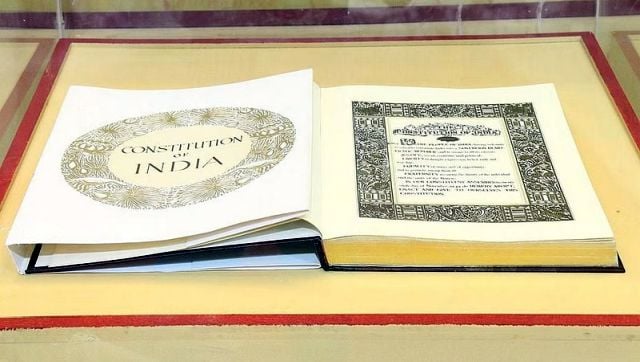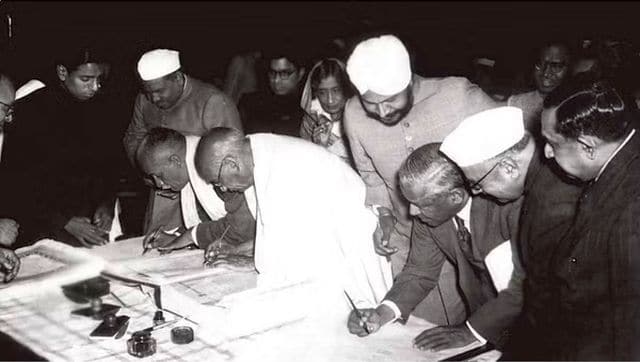Drafting History: How India’s Constitution came to being in 1950
Drafting History: How India’s Constitution came to being in 1950

On Thursday (26 January), India celebrated Republic Day — when the Constitution of India came into effect — with great pomp and pageantry.
And why not. India’s Constitution is the lengthiest in the world — 145,000 words in its first version. Since then, it has been amended 100 times and grown bigger. In fact, Sir Ivory Jennings, a renowned constitutionalist of that time, had said this about India’s founding document: “Too long, too rigid, too prolix.”
But besides being the longest, it is also the most important document for India, as as it lays down the supreme law of the country. It is the principle governing document of the country.
But, how did the Constitution come into being? Who made the Constitution of the country and what were the challenges in making it?
The making of the Constitution
The history of the Constitution of India dates back to the British raj in India. The roots of the Indian Constitution lie in the nationalist movement against colonial rule as well as movements for responsible and constitutional governments in the princely states.
In 1934, while leaders continued their battle for freedom against the British, an idea was put forth of creating a Constituent Assembly, which would prepare a Draft Constitution for India.
In the following year, it became an official demand of the Indian National Congress. C Rajagopalachari voiced the demand for a Constituent Assembly again on 15 November 1939. It is only in 1942 that the British government finally acceded to the request of India framing its own Constitution through the Constituent Assembly.
In 1945, the British announced its plan to create a Constituent Assembly of India to be elected indirectly by the Provincial Assemblies. The plan was that representatives from the British Indian provinces and princely states would comprise the Constituent Assembly. However, the princely states refused to participate in the Constituent Assembly as they wanted to create their own independent states. Hence the Constituent Assembly was formed with only the 296 representatives from the British India.
Unfazed by the non-involvement of the princely states as well as Mohammed Jinnah withdrawing from it, the Congress went ahead with its plans and on 9 December 1946, the Constituent Assembly met for the first time in the Constitution hall of New Delhi to start the historical journey which led to the creation of the Constitution.
Also read: How Preamble to the Constitution was adopted, its origins, what it means
Though the Constituent Assembly consisted of 296 members, the first historical session was attended by only 210 members. Attending this session, KM Munshi, a prominent intellectual of the then India, remarked, “A great day for India has dawned. Indians are going to frame their own constitution, but there is unhappiness everywhere.”
Four days later, Nehru moved the historic Objectives Resolution in the Assembly which formed the guiding principles and philosophy of writing the Constitution.

Working of the Constituent Assembly
The Constituent Assembly then appointed a total of 13 committees to deal with different tasks of Constitution-making, with Dr BR Ambedkar leading the drafting committee.
This committee, perhaps, had the biggest responsibility as it was to determine how a newly independent, newly dismembered nation would define and govern itself.
Repeated debates, discussions, arguments, scrapping of clauses, the addition of clauses took place whenever the Committee used to meet. As Ambedkar once said, “Our difficulty is not about the ultimate future. Our difficulty is how to make the heterogeneous mass that we have today take a decision in common and march in a co-operative way on that road which is bound to lead us to unity. Our difficulty is not with regard to the ultimate. Our difficulty is with regard to the beginning.”
The Drafting Committee borrowed ideas from Ireland, Canada, Germany, Australia, Russia, Britain, the USA, and Japan — with many calling the final draft of the Constitution a ‘Bag of Borrowings’.
For instance, the Constitution stated that India would follow a Parliamentary system, an idea borrowed from the United Kingdom constitution. Just as Britain has setup a bicameral legislative system, so has India.
Similarly, just as the American constitution has the Bill of Rights, India has its Fundamental Rights.
The ideals of liberty, equality, fraternity come from the French constitution. These words appear in the Preamble to the Constitution of India.
The idea of a concurrent list in India’s Constitution comes from Australia. And just as the USSR has fundamental duties, so does India.
Also read: Hindutva and Hind Swaraj | Does India need a new Constitution?
The makers of the Constitution also provided for an independent judiciary.
And finally, after two years, 11 months and 18 days of deliberations, debates, and discussions, it came up with the final draft of the Constitution.

On 24 January 1950, 284 members of the Constituent Assembly signed the Indian Constitution at the Constitution Hall, now known as the Central Hall of Parliament, in New Delhi and it came into effect two days later on 26 January 1950.
Ancient India and the Constitution
While most observe that India’s Constitution is a mixed bag of ideas from all over the world, it could also be said that ancient Indian texts serve as the inspiration for the Constitution and lays the foundation of governance.
For instance, rule of law is not an imported doctrine and has been prevalent in Indian society during early Vedic period. Elaborate references of it can be found in scriptures such as Veda, Upanishad, sage Yajnavalkya’s Smriti, Manusmriti, Mahabharata (Vyas Maharshi), Ramayana and Kautilya’s Arthashastra.
In fact, the Artha Shastra, written by Kautilya in the 4th Century BC, mentioned different aspects of governance and also defined the seven elements of a state.
The Mahabharata has a detailed narration about the features of republics (called ganas) in India.
It states that when there is unity among the people of a republic that republic becomes powerful and its people become prosperous and they are destroyed only by internal conflicts between the people.
In conclusion, the Constitution of India, despite its criticisms (it being too lengthy and too complicated) stands tall and relevant and is the sole guiding light of how our country should function.
With inputs from agencies
Read all the Latest News, Trending News, Cricket News, Bollywood News,
India News and Entertainment News here. Follow us on Facebook, Twitter and Instagram.
What's Your Reaction?



























































